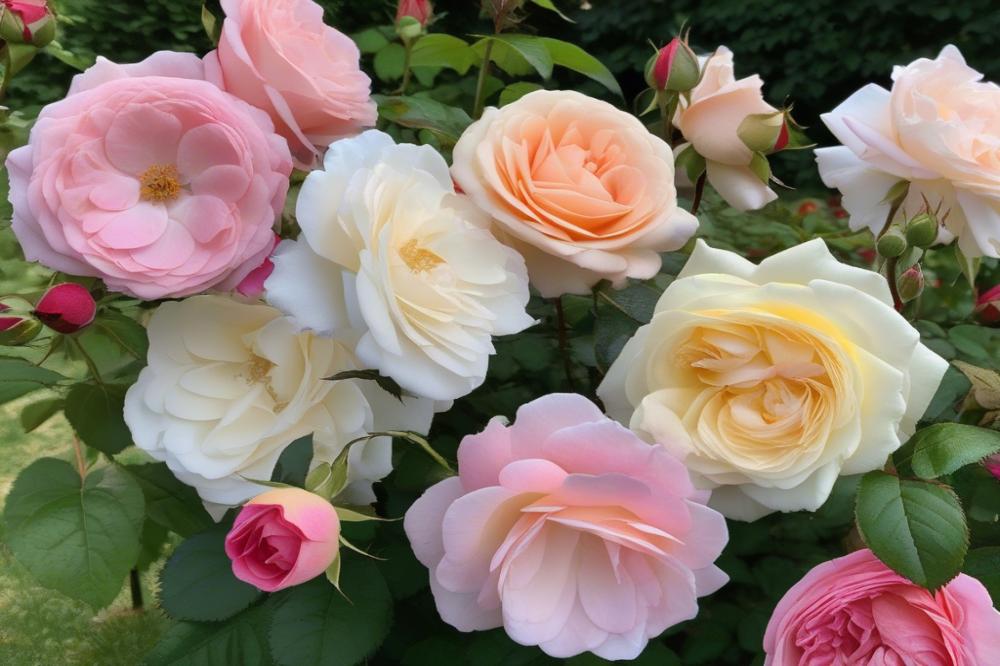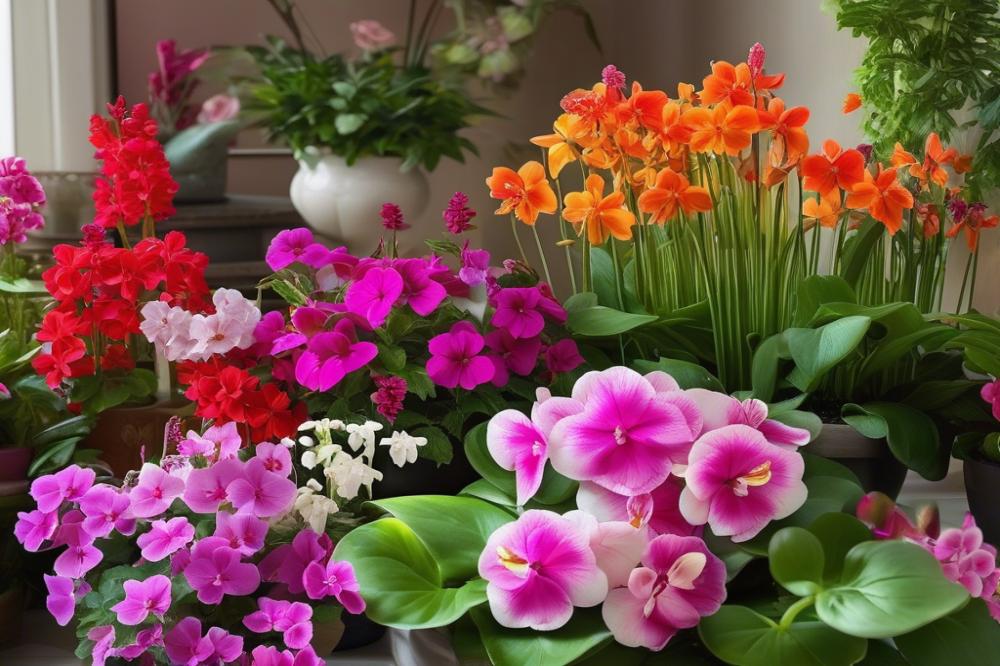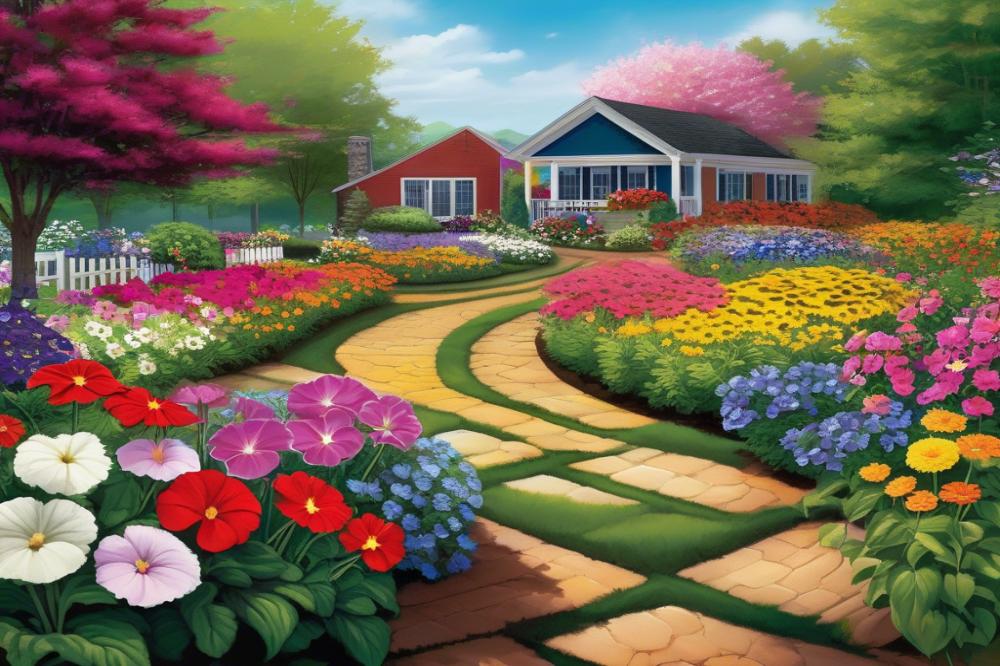Introduction
old-fashioned roses have long captivated gardeners with their elegance and charm. These flowers, often referred to as heritage roses, bring a special beauty to cottage gardens. Their rich history and enchanting scents create an irresistible allure that many find appealing. Garden enthusiasts appreciate the refined touch these roses provide, transforming ordinary outdoor spaces into enchanting retreats.
The significance of these blooms extends beyond mere aesthetics. climbing roses, bush roses, and fragrant varieties offer diverse options for various garden designs. They thrive in many conditions, showcasing their resilient nature. This durability is a key reason why they have remained perennial favorites among enthusiasts. Additionally, the seasonal blooms add layers of color and fragrance, enhancing the garden experience.
heritage roses form an important part of gardening culture. Antique roses and English roses are particularly celebrated for their romantic, nostalgic aura. The gentle, sprawling growth of these plants makes them perfect for creating cozy nooks and inviting pathways. Adding climbing varieties can create stunning vertical elements that draw the eye upward and encourage exploration.
As gardeners seek to create personal sanctuaries, these blooms provide an avenue to connect with nature. The emotional resonance of old-fashioned roses is undeniable; they evoke memories of simpler times. Embracing these exquisite plants can profoundly impact any cottage garden, making it a beloved haven for years to come.
Understanding Old-Fashioned Roses

Old-fashioned roses encompass a nostalgic charm that many garden enthusiasts adore. These roses often have origins that date back to before the 20th century. Their characteristics include simple, open forms and a delightful range of colors. Frequently, they boast rich fragrances, which modern hybrids sometimes lack. Gardeners appreciate their predictable seasonal blooms and the fact that they can thrive in a variety of soil types.
Differences between these roses and their modern counterparts are significant. While modern hybrids often focus on uniformity and visual impact, old-fashioned varieties prioritize scent and overall resilience. Antique roses have survived the test of time due to their hardiness, thriving in gardens with minimal care. In contrast, hybrids may require more attention and specific conditions to flourish.
There are a few key types worth highlighting. Heritage roses, for instance, include classic varieties that bring beauty and history to any garden design. climbing roses are perfect for adding vertical interest along fences or trellises; their ability to scale structures provides dramatic flair. Bush roses tend to produce abundant blooms that add splashes of color near pathways or flower beds.
Fragrant roses often feature scents that evoke emotion or memories. Choosing English roses can offer both beauty and fragrance; they are known for their lush blooms and delightful aromas. Resilient roses, on the other hand, are ideal for those who seek low-maintenance options but still want stunning displays. These perennial favorites are not only practical but also pleasing to the senses.
Selecting Old-Fashioned Roses for Your Cottage Garden

Choosing the best varieties of roses for your garden design can be an enjoyable task. Start with the overall feel you want to create. Consider the atmosphere of a cozy cottage, filled with charm and nostalgia. Each rose type brings something special to the table, enhancing the beauty of your garden.
Heritage Roses for History and Charm
Heritage roses add historical significance and rich stories to any garden. These plants often bloom with exquisite, complex colors and fragrances. Their timeless appeal makes them a perennial favorite among gardeners. Selecting these varieties allows you to connect with the past while enjoying their stunning beauty today.
Climbing Roses for Vertical Interest
Climbing roses introduce vertical elements that can transform your space. Drape them over trellises, arches, or fences to create a lush, romantic atmosphere. Many climbing variations are known for their vigorous growth and ability to produce dramatic seasonal blooms. Imagine a gateway adorned with cascading flowers. Such an image certainly captivates the imagination.
Bush Roses for Structured Beauty
Bush roses offer a structured beauty that is hard to match. They work well in various garden designs, providing both form and function. Planting these resilient roses creates distinct shapes and borders, enhancing your landscape. Their compact nature makes them ideal for smaller gardens while still delivering a burst of color.
Fragrant Roses for Sensory Appeal
Fragrant roses elevate your cottage garden with delightful scents. A sensory experience can significantly enrich your time spent outdoors. Opt for varieties that are renowned for their strong, pleasing fragrances. When the air fills with their sweet aroma, it invites relaxation and enjoyment. These roses can also attract pollinators, adding to the overall vibrancy of your garden.
Combining different types will yield a dynamic and engaging space. Think about how each variety complements the others. Mixing heritage and fragrant roses with climbing varieties creates depth. Anticipate a delightful sensory journey as each bloom unfolds throughout the seasons.
Your garden will become a sanctuary of beauty, attracting both people and wildlife alike. Embrace the charm of antique roses and explore the enchanting world of English roses. The perfect combination will revive your love for gardening and inspire creativity.
Cultivating and Caring for Old-Fashioned Roses

Planting old-fashioned roses requires some preparation. Start with selecting a site that offers sufficient sunlight. Most roses thrive with a minimum of six hours of direct sunlight each day. Focus on your soil as well; it should be well-draining and rich in organic matter. Incorporating compost or aged manure can greatly enhance its quality. This gives your plants the nourishment they need to flourish.
Watering these plants is equally important. Aim to keep the soil consistently moist, especially during the first growing season. Deep watering is better than frequent shallow watering. Consider tailoring your approach based on the season. Hot summer days may require more water, while cooler months could mean less. Always remember to water at the base of the plant to prevent diseases.
Fertilization Techniques
Fertilizing your roses can promote vibrant blooms. Use a balanced fertilizer specifically designed for roses, ideally in early spring when new growth begins. Apply it as per the manufacturer’s instructions. A second application mid-summer can also be beneficial. Keep in mind, over-fertilization can lead to lush foliage but fewer flowers.
Pruning Techniques
Pruning is crucial for growth and flowering. For heritage roses, cut back dead or weak stems in late winter or early spring. Climbing roses require pruning right after flowering to maintain their shape. Bush varieties often benefit from a more aggressive trim, focusing on removing old wood and encouraging new growth. Regular maintenance keeps plants healthy and encourages the best blooms.
Pest and Disease Management
Resilient roses can still face pests and diseases. Regular inspection is important. Aphids and spider mites often favor these plants. A simple spray of water can help dislodge these pests. For larger infestations, consider insecticidal soap as a remedy. Diseases like black spot can be combated through proper air circulation. Space your plants adequately when designing your garden.
Maintaining cleanliness in your garden will also reduce issues. Rake up fallen leaves and debris to prevent disease spread. With good care, your antique roses and fragrant roses can thrive beautifully. Regular vigilance allows for tackling problems before they escalate. Seasonal blooms will flourish with proper attention, ensuring your cottage garden remains a perennial favorite.
Combining Old-Fashioned Roses with Other Plants

Heritage roses can create stunning focal points in cottage gardens. Pairing them with companion plants enhances both beauty and health. For example, planting fragrant roses alongside lavender not only adds charm but also attracts beneficial pollinators. A combination of bright geraniums or daisies can provide a vibrant contrast to the soft hues of antique roses.
Design Ideas for Incorporating Antique Roses
Consider planting climbing roses on trellises or arbors. This allows them to create vertical interest, making your garden feel more expansive. Bush roses benefit from being placed near perennial favorites like daylilies or coreopsis. Their longer blooming periods can offer a mixed palette from late spring to early fall. Furthermore, provide some sturdy support, such as fences, for climbing varieties to encourage growth and ensure lovely cascading blooms.
Creating Seasonal Blooms with a Floral Mix
Bursting with color throughout the seasons is an exciting goal for any garden. Start with early bloomers like crocuses or daffodils that complement the early flush of roses. In mid-summer, mix in some echinacea or phlox to continue the spectacle. Planting asters or sedum in the fall can extend the flowering period into cooler months. These blooming strategies keep your garden lively and visually appealing all year long.
When planning your layout, remember to consider the varying heights of your plants. Taller climbing roses should be placed at the back or center, with shorter perennials framing them. Resilient roses thrive with proper spacing, which helps reduce competition for nutrients and sunlight. Thoughtful placement not only maximizes beauty but also encourages health by minimizing disease.
The Role of Old-Fashioned Roses in Sustainable Gardening
Old-fashioned roses offer significant ecological benefits that enhance sustainable gardening practices. Their natural resistance to diseases means they require fewer chemical treatments, making them a healthier choice for our environment. In contrast to modern hybrids, these resilient roses are often better suited to withstand pests and harsh weather conditions. This durability can lead to less maintenance and less reliance on harmful pesticides.
In a cottage garden, incorporating heritage roses can transform the landscape into a haven for bees and butterflies. These climbing roses and bush roses create beautiful vertical and horizontal spaces, inviting essential pollinators. A garden designed with fragrant roses and vibrant blooms not only looks stunning but also supports local ecosystems. Each flower serves as a critical food source for insects, thereby promoting biodiversity in the area.
Antique roses are famous for their seasonal blooms, which often last longer than many contemporary varieties. Selecting perennial favorites like English roses can help ensure a colorful display year after year. A garden that blooms continuously throughout different seasons engages both human eyes and the natural world around it. This constant activity in your backyard creates an inviting space for wildlife.
By planting a variety of these old-fashioned types, gardeners can create a balanced ecosystem. Such garden design encourages healthy soil and air, benefiting every plant and insect involved. Embracing the charm of heritage varieties enriches our outdoor spaces while supporting sustainable practices. Ultimately, the role these beautiful plants play in our gardens has never been more crucial. They represent a commitment to gardening that respects nature and nurtures our planet.
Reflecting on the Timeless Elegance of Roses in Cottage Gardens
Old-fashioned roses bring a special charm to cottage gardens. Their beauty is not just in their blooms, but also in the memories they evoke. Many find that these plants carry a sense of nostalgia, reminding them of gardens from childhood or stories passed down through generations. Their soft colors and rich fragrances create a magical atmosphere that is hard to replicate with modern varieties.
Embracing these timeless plants means welcoming a piece of history into your own garden. They offer more than just aesthetics; they provide a habitat for pollinators, contributing to the overall biodiversity in your backyard. Heritage roses, in particular, thrive with minimal intervention, making them perfect for gardeners of all experience levels.
Climbing roses can add vertical interest and soften fences or trellises. Imagine how lovely it would be to have these climbing beauties cascading over an archway, inviting visitors into an enchanting space. Their robust nature ensures they can withstand various weather conditions while remaining stunning through seasons.
As you consider your options for a cottage garden, think of incorporating these cherished plants. Each rose tells a story and adds depth to your landscape. With their resilience and grace, old-fashioned roses stand the test of time, just like the traditions they represent.
Nurturing them is more than just gardening; it’s a connection to the past. You’ll be creating a soothing retreat that echoes the warmth and charm of simpler times. Ultimately, the legacy these flowers carry is one of beauty, resilience, and a rich tapestry of history. Now is the perfect time to embrace these magnificent plants and enhance your garden’s spirit.



